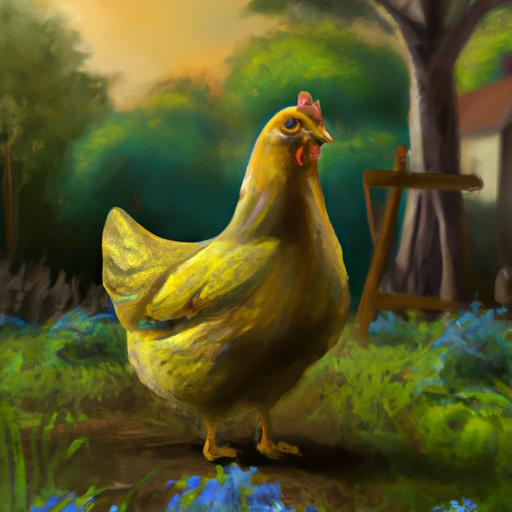When it comes to raising chickens, one of the most unpleasant tasks is caring for chickens with dirty bottoms.
This unsightly and uncomfortable condition can range from being a minor nuisance to a serious health issue.
Fortunately, there are steps you can take to treat and prevent chickens from having dirty bottoms.
In this guide, we will discuss the causes and treatments of this common problem, as well as provide natural remedies and preventive measures to keep your chickens healthy and happy.
Read on to learn how to treat chickens with dirty bottoms.
Table of Contents
Short Answer
The first step in treating chickens with dirty bottoms is to identify the underlying cause.
Common causes include parasites, improper diet, or poor hygiene.
To treat the condition, it is important to provide the chickens with a balanced diet, maintain clean and dry living conditions, and use a poultry-safe insecticide to eliminate any parasites that may be present.
In some cases, a trip to the vet may be necessary to properly diagnose and treat the condition.
Identify the Cause of the Problem
When it comes to treating chickens with dirty bottoms, the first step is to identify the cause of the problem.
The cause of a chicken’s dirty bottom can range from bacterial or fungal infections to parasites or other environmental factors.
It is important to accurately identify the cause in order to provide the best treatment for the chicken.
Bacterial and fungal infections can be identified by the presence of a foul smell or discharge from the chicken’s bottom.
The skin may also be red, swollen, or irritated.
If a bacterial or fungal infection is present, an appropriate medication, such as an antibiotic or antifungal ointment, should be used to treat the infection.
Parasites can also be the cause of a dirty bottom in chickens.
These parasites can range from mites to worms, and can be identified by the presence of black or white spots on the feathers around the chicken’s vent.
If parasites are present, an appropriate medication should be used to treat them.
Environmental factors can also lead to a dirty bottom in chickens.
These factors include inadequate ventilation in the coop, poor diet, or unclean conditions.
If environmental factors are to blame, steps should be taken to improve the environment in which the chickens live.
This could include adding ventilation to the coop, changing the diet, or cleaning the coop more regularly.
Once the cause of a dirty bottom in chickens is identified, the appropriate steps can be taken to treat the problem.
Isolating the affected bird from the rest of the flock is important, as well as providing the bird with access to fresh, clean water and food.
Additionally, regularly cleaning the chicken’s bottom and surrounding area with warm, soapy water can help to reduce the risk of infection and irritation.
Following these simple steps should lead to a healthy and happy chicken.
Use Appropriate Medication

When treating a chicken with a dirty bottom, its important to determine the cause of the problem.
If it is a bacterial or fungal infection, its important to use the appropriate medication.
Antibiotics or antifungal ointment should be used in order to effectively treat the infection.
Its important to follow the instructions on the label carefully in order to ensure the best results.
Additionally, its important to monitor the chickens health regularly and make sure that the infection is not getting worse or spreading to other chickens.
If the infection does not seem to be improving, its important to consult a veterinarian for further advice and treatment.
Isolate the Affected Bird
When it comes to treating chickens with dirty bottoms, one of the most important steps is to isolate the affected bird from the rest of the flock.
This is important for both the health of the affected bird and the other birds in the flock.
Isolating the affected bird can help prevent the spread of infection and other illnesses and also allows the affected bird to rest and recover in a safe and stress-free environment.
When isolating the affected bird, it is important to choose an area that is separate from the rest of the flock and also has access to fresh, clean water and food.
It is also important to ensure that the area is temperature controlled so that the bird is not exposed to extreme temperatures.
Additionally, make sure that the area is free of drafts, predators, and other sources of stress.
Finally, check on the bird periodically to ensure that it is eating, drinking, and behaving normally.
If you notice any signs of distress or illness, contact a veterinarian immediately.
By following these steps, you can ensure that the affected bird is able to rest and recover in a safe and comfortable environment.
Provide Access to Fresh Food and Water

Providing access to fresh food and water is an essential step when it comes to treating chickens with dirty bottoms.
Not only will it help to keep the bird hydrated and nourished, but it can also assist in flushing out any bacteria or fungi that may be present in the birds system.
The food and water should be changed every day to ensure that it remains fresh and uncontaminated.
Also, its important to make sure that the food is high in protein, as this helps to strengthen the birds immune system and promote healing.
Furthermore, its important to make sure that the water source is clean and uncontaminated.
An easy way to do this is to use a water filter or to use bottled or distilled water.
Finally, make sure that the bird has access to clean, fresh bedding to help keep its bottom area dry and clean.
Clean the Chicken’s Bottom Regularly
When dealing with a chicken with a dirty bottom, it is important to clean the area regularly.
This means using warm, soapy water to clean the area and remove any dirt, debris, or other contaminants that can lead to further problems.
Make sure to be gentle when cleaning the bird, as this can cause the bird to become uncomfortable or stressed.
Use a soft cloth or brush to gently remove any dirt that has built up, and make sure to rinse off any soap residue as this can cause irritation.
Additionally, it is a good idea to dry the area afterwards as this can help to reduce the risk of infection.
It is important to note that it is also important to regularly check the chickens bottom for any signs of irritation or infection.
If you notice any redness, swelling, or discharge, it is important to seek veterinary assistance as soon as possible.
Additionally, if the area is particularly dirty, it is a good idea to use a medicated solution to help clear up any possible bacterial or fungal infections.
Finally, it is important to ensure that the bird is always provided with a clean and comfortable environment.
This means regularly cleaning the area around the birds coop or enclosure, as well as providing plenty of fresh water and food.
Additionally, make sure to provide the bird with plenty of space to move around, as this can help to reduce the risk of the bird developing any health problems.
Natural Remedies for Treatment

As with many health issues, treating chickens with dirty bottoms can often be done with natural remedies.
These remedies can be just as effective as a pharmaceutical medication, and are often safer for the chicken.
Some of the most effective natural remedies for chicken dirty bottoms include apple cider vinegar, coconut oil, garlic, and honey.
Apple cider vinegar is a natural disinfectant and can be used to disinfect a chicken’s bottom.
To use apple cider vinegar, mix one part vinegar with four parts warm water in a spray bottle.
Spray the mixture onto the chicken’s bottom, making sure to get the mixture into any folds in the skin.
This should help to reduce bacteria and fungi, as well as provide relief from itching.
Coconut oil is a natural anti-fungal and is often used to treat skin problems in chickens.
Coconut oil can be applied directly to the affected area, or mixed with other ingredients such as garlic and honey to create a more effective remedy.
Garlic has anti-fungal and antibacterial properties, and can be used to treat a variety of skin conditions in chickens.
To use garlic to treat a chicken’s dirty bottom, blend one garlic clove with two tablespoons of olive oil.
Apply the mixture to the affected area, and allow it to sit for about 30 minutes.
Rinse away with warm, soapy water and repeat twice a day until the condition is cleared up.
Honey is a natural antiseptic and can be used to treat skin problems in chickens.
To use honey to treat a dirty bottom, mix equal parts honey and warm water in a spray bottle.
Apply the mixture to the affected area, and allow it to sit for about 30 minutes.
Rinse away with warm, soapy water and repeat twice a day until the condition is cleared up.
When treating a chicken with a dirty bottom, it is important to identify the cause of the problem and use the appropriate remedy.
Natural remedies can be just as effective as pharmaceutical medications, and are often safer for the chicken.
By following these steps, you can help to ensure that your chicken has a healthy and happy bottom!
Prevention is Important
Having a chicken with a dirty bottom can be an unpleasant experience for both the chicken and the chicken owner.
Fortunately, there are simple steps that can be taken to treat and prevent chickens from getting dirty bottoms.
Preventing a dirty bottom in chickens starts with proper care and hygiene.
It is important to provide chickens with clean, dry bedding in the coop and to regularly clean and disinfect the coop.
Additionally, it is important to make sure that the chickens have access to clean water and food.
Regularly check the chickens for signs of dirt or debris on the feathers around their bottoms and clean them off if necessary.
Finally, be sure to monitor the chickens for any signs of illness or injury that could be causing the dirt and take appropriate measures to treat the issue.
By following these steps, you can go a long way in preventing your chickens from getting dirty bottoms.
Final Thoughts
Treating chickens with dirty bottoms doesn’t have to be a difficult experience.
By following the steps outlined in this guide, chicken owners can quickly and easily identify the cause of the problem, use the appropriate medication, and provide the affected bird with fresh food and water.
Additionally, regular cleaning of the chicken’s bottom and surrounding area is key to preventing future infections and keeping the chicken healthy and happy.
So, if you’re a chicken owner, take the time to properly care for your chickens and save yourself the hassle of dealing with a dirty bottom!

